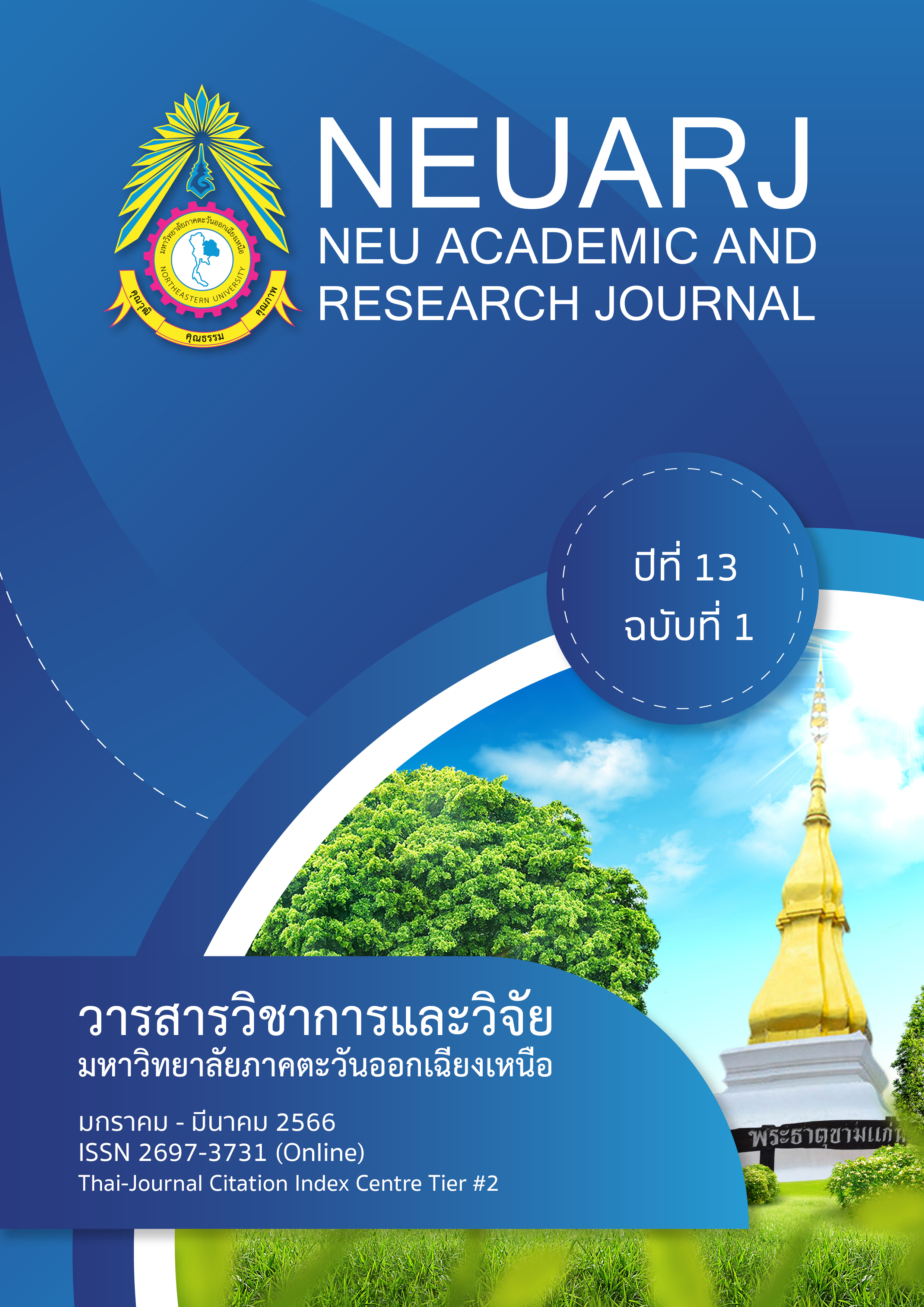The Development of a Social intelligence Scale for Students in the Faculty of Education, Thailand National Sports University, AngThong Campus
Keywords:
Social intelligence, Factor analysis, Thailand National Sports UniversityAbstract
The objective of this research was to develop a social intelligence scale for students in the Faculty of Education, Thailand National Sports University, AngThong Campus. The sample group comprised students in the Faculty of Education, Thailand National Sports University, AngThong Campus during academic Year 2020. Included were 359 people from all population groups. The instrument was a social intelligence questionnaire with items measured on a 5 point Likert scale. The quality of the test was examined by content validity, discriminating powers, construct
validity and reliability. The results of the research found that thirty-one items on the social intelligence scale had content validity index (IOC range from 0.60 to 1.00). The discriminating powers ranged from 2.32 – 11.13 and were statistically significant at 0.05, while the Corrected Item-Total Correlation (CITC) ranged between 0.21 – 0.70. For the discriminating powers of the social intelligence scale, twenty-four items ranged from 6.50 – 13.53 and were statistically significant at 0.05, while the Corrected Item-Total Correlation ranged from 0.34 – 0.65. The confirmatory factor analysis that was created fit the empirical data ( X2= 1.21; df = 4; P = 0.88; GFI = 1.00; AGFI = 0.99; RMSEA = 0.02; RMR = 0.04). The reliability of the social intelligence scale analyzed by Cronbach’s coefficient alpha for each trait ranged from 0.85 – 0.86.
References
กาญจน์กมล สุวิทยารัตน์. (2557). การศึกษาความฉลาดทางสังคมของนักศึกษาในสถาบันอุดมศึกษาภาคใต้. (วิทยานิพนธ์ปริญญาศึกษาศาสตรดุษฎีบัณฑิต, มหาวิทยาลัยศรีนครินทรวิโรฒ).
คณิตพันธุ์ ทองสืบสาย. (2552). การพัฒนาแบบวัดความฉลาดทางสังคมสำหรับนักศึกษาปริญญาบัณฑิต.(วิทยานิพนธ์ปริญญาครุศาสตรมหาบัณฑิต, จุฬาลงกรณ์มหาวิทยาลัย).
ธัญญา ผลอนันต์ และ จุไรพร วิสุทธิกุลพาณิชย์. (2551). ใช้หัวก่อน. กรุงเทพฯ: สำนักพิมพ์ขวัญข้าว.
พรสวรรค์ ชัยมีแรง. (2564). การพัฒนาระบบสารสนเทศเพื่อจัดการมาตรฐานผลการเรียนรู้ของหลักสูตรระดับอุดมศึกษา. วารสารวิชาการและวิจัย มหาวิทยาลัยภาคตะวันออกเฉียงเหนือ, 11(2), 68-82.
พวงรัตน์ ทวีรัตน์. (2540). วิธีการวิจัยทางพฤติกรรมศาสตร์และสังคมศาสตร์ (พิมพ์ครั้งที่ 7). กรุงเทพฯ: มหาวิทยาลัยศรีนครินทรวิโรฒ ประสานมิตร.
พสุ เตชะรินทร์. (2549). ความฉลาดทางสังคม (ออนไลน์). สืบค้นเมื่อ 6 กุมภาพันธ์ 2563, จาก http://www. bangkokbiznews.com.
Albrecht,K. (2006). Social Intelligence: The New Science of Success. Journal of Applied. Management and Entrepreneurship, 11(3), 97–99.
Babu, M. (2007). Social Intelligence and Aggression among Senior Secondary School Students: A Comparative Sketch. Retrieved July 9, 2019, จาก http://files.eric.ed.gov/fulltext/ ED500484.pdf.
Goleman, D. (2006). Social Intelligence: The New Science of human relationships. New York: Bantam Books.
Hair, et al., (2010). Multivariate Data Analysis (7thed). New York: Pearson.
Khorzoghi, M.B., et al. (2014). Relationship between social intelligence with athletic identity among Wushu athletes. Scholars Journal of Arts, Humanities and Social Sciences, 2(3B), 428–433.
Kosmitzki, C., and John, O. P. (1993). The implicit use of explicit conceptions of social intelligence. Personality and Individual Differences. 15(1): 11–23.
Marlowe, H.A. (1986). social intelligence: Evidence for multidimensionality and construct independence. Journal of Education Psychology, 78(1), 52–58.
Shazia, H. (2013). Development and Validation of Social Intelligence Scale for University Students. Pakistan. Journal of Psychological Research, 28(1), 65–83.
Thorndike, E.L. (1920). Intelligence and its uses. Retrieved July 9, 2019, จาก https://www.unz. com/print/Harpers-1920jan-00227/.

Downloads
Published
How to Cite
Issue
Section
License
Copyright (c) 2023 NEU ACADEMIC AND RESEARCH JOURNAL

This work is licensed under a Creative Commons Attribution-NonCommercial-NoDerivatives 4.0 International License.


